From the Field: Bill Buck in Cape Horn 2014, Part 3
Posted in From the Field on March 7, 2014 by Bill Buck
William R. Buck, Ph.D., is the Mary Flagler Cary Curator of Botany at The New York Botanical Garden. For the last three years, Dr. Buck, a moss specialist, and a team of colleagues have journeyed to the Cape Horn region at the southern tip of South America, an area rich in moss species.
January 11, 2014; Isla Hoste, Caleta Coloane, Chile (55°06’S, 69°49’W)
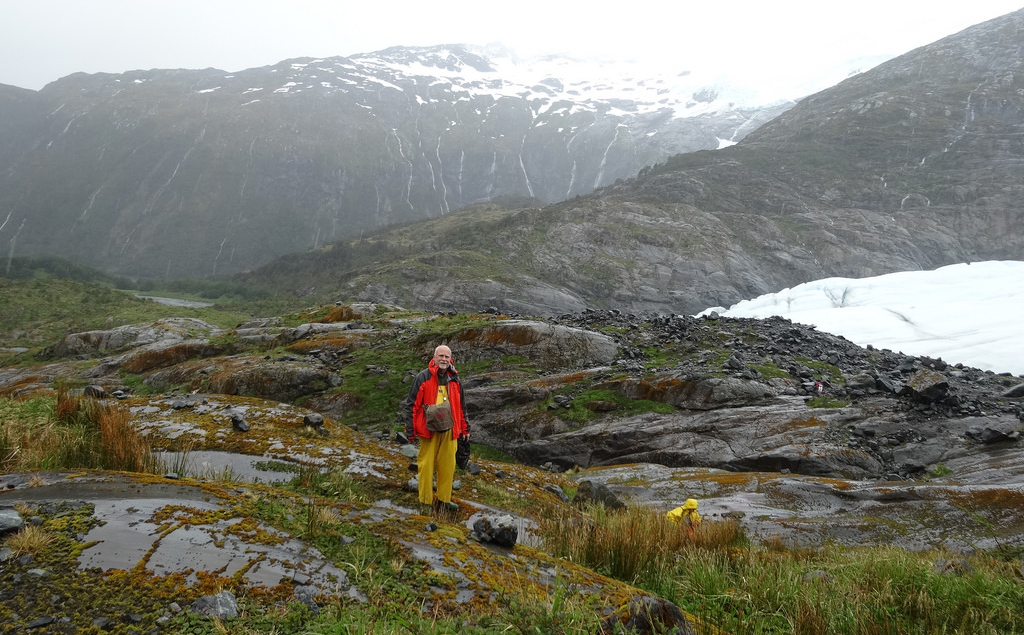
Yesterday the engines started at 5 a.m., and we began our trip back to Isla Stewart, heading for the eastern end this time. Although the engines wound to life early, it is never quiet on the ship, thanks to the generator. It is always running, supplying power to the dryers we use to preserve specimens. Nevertheless, there is a significant boost in decibels once the main power plant starts up.
Arriving at about 7 a.m., we tied up to the rocks right near the shore. The crew immediately set off to refill the water tank from a nearby waterfall. Hallelujah! Before leaving Punta Arenas the tank was filled with municipal water, which is heavily chlorinated. The fresh water in this part of the world is some of the most pristine on the planet and tastes immeasurably better than any poor city substitute.
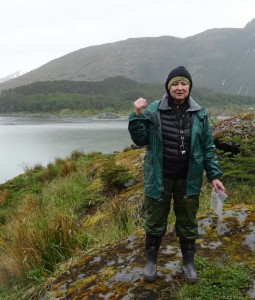
Our moss collecting took place just up a gradually sloping Magellanic tundra with a fast-flowing stream cutting through it. Working our way uphill, many of the expected species began to reveal themselves. I was able to show Barb Andreas examples of fertile Blindia, giving her a better understanding of its habitat. The prime reason for visiting this island, however, was to look for Eosphagnum, which is found at sites to the west of the island but not to the east. I kept my eyes peeled for it. It proved illusive once again, but I did find one small population of Sphagnum falcatulum, the local representative of section Cuspidata.
By lunchtime we were all ready to move on. Either the distribution of Eosphagnum ended west of Isla Stewart, or we simply failed to find it. Either way, I doubt anyone will be able to definitively answer that question for a good number of years because no one will have the resources to repeat the incredible field exploration we’ve been fortunate enough to undertake.
Our next stop was to be a repeat location on Isla Hoste. We were told it would take about seven hours to arrive, and as we made our way through narrow channels, the scenery changed dramatically. Rather than slopes boasting a mosaic of forest and tundra, we were now entering an area of high, snow-covered peaks. Although the sky was overcast and a light rain fell continuously, I had no interest in retreating to the warm, dry galley. I preferred to stay outside, excited by the scenery and exhilarated by the weather.
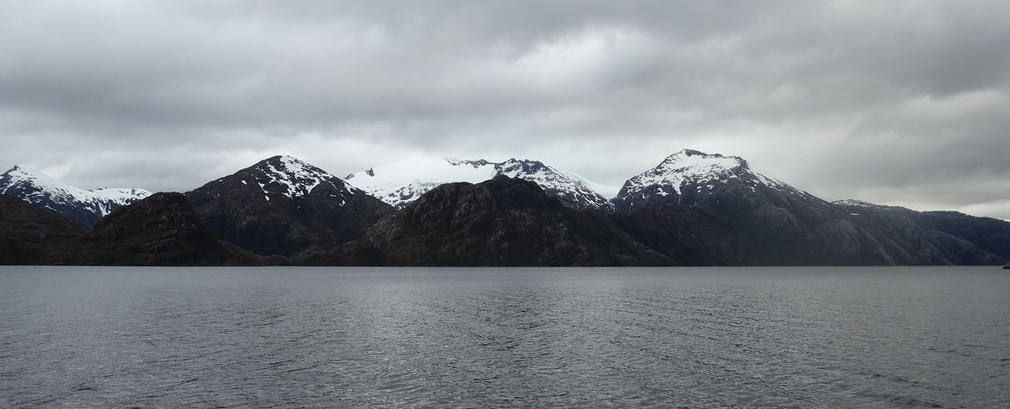
At about 8 p.m., we arrived at our destination, Caleta Coloane. This is the third time I’ve been to this site. The first was in 2004, when I collected specimens in a forest adjacent to a large waterfall. It was on a steep slope, so much so that I had to pull myself up by grabbing tree trunks and resting my back against them to keep from falling downhill. I brought back a liverwort that was new to the region (Phyllothallia) that time. Then, two years ago, I returned once again, wanting to explore the weakly vegetated area near a glacier where my colleague John Engel had initially collected an Andreaea nitida—one that I’d never seen before.
This will be our only glacier stop this year, and the reason I chose to stop at all is because the site was so rich in Andreaea species (lantern mosses), the group in which expedition member Barbara Murray specializes. I wanted her to see this site for herself. We all turned in for the night anxiously anticipating the collecting to come the next day.
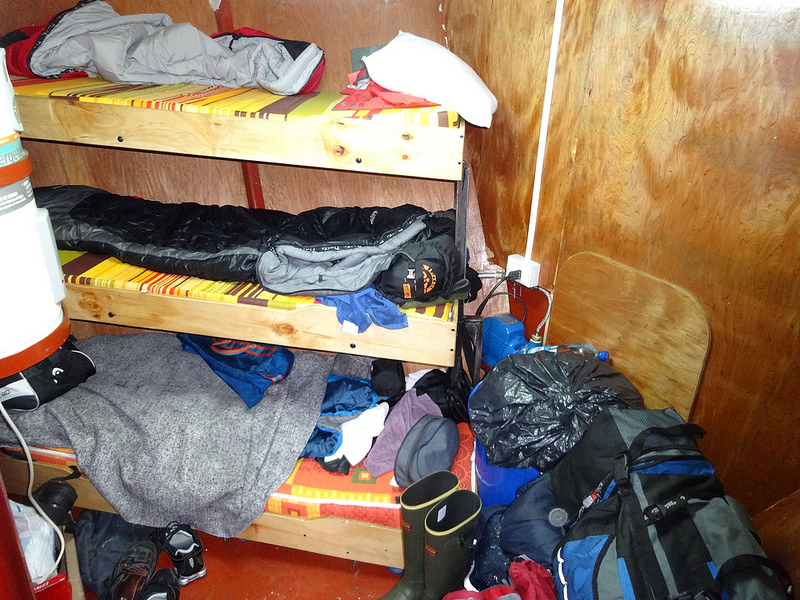
At 7 a.m., a loud noise awoke us all. The bunkrooms are in the lowest part of the ship and tend to be pitch black unless a light is on, making it easy to stay in bed. The noise proved to be a pump that moved water from a large tank deep in the ship to a smaller one higher up, which would then feed the various faucets on board. I didn’t completely understand the problem (nothing new here!), but we were without water until the system could be fixed. By then, everyone was up and breakfast was underway. The cook delighted us with fried bread made from fresh dough. Needless to say, this delayed our departure for the field.
A light rain fell continuously while we were collecting. Of course, the last time I was here it rained heavily all day, so this was little more than a minor inconvenience. It was also surprisingly warm considering our close proximity to a glacier. As a consequence, I preferred to keep the hood of my raincoat down for most of the day. A damp neck is better than sweaty clothes.
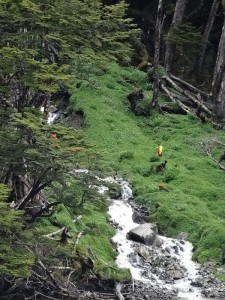
The collecting site did not disappoint. We found Andreaea after Andreaea at every turn. This part of the world contains the most species of the genus. Since many of them are at least occasionally aquatic, it was no surprise that all the day’s collections needed to be re-bagged before they could be placed on the dryers. All of our group save for John Brinda returned to the ship at noon.
For the rest of the day, I thought about my decision to let John stay out alone, and I realized it was a mistake. The landscape here is too treacherous, and anyone can fall and get hurt. When John returned, I explained that, for his own safety, I could not let him set out alone again. He needed to remain within sight or sound of another collector, which in the tundras can be quite far. He said he understood the situation.
From here we are scheduled to travel all night, 12 hours, arriving in Bahía Orange tomorrow morning.
Past Expedition Entries:
All photos provided by Barbara Andreas


Bill thank you very much for having shared with us these years of wonderful expeditions in Cape Horn. I also followed your expedition in Tasmania . The wonderful pictures and the descriptions of each place with it´s mosses etc. I love the way you write. Sometimes I thought I was almost there.
I´m looking forward to follow you again some day in some place.